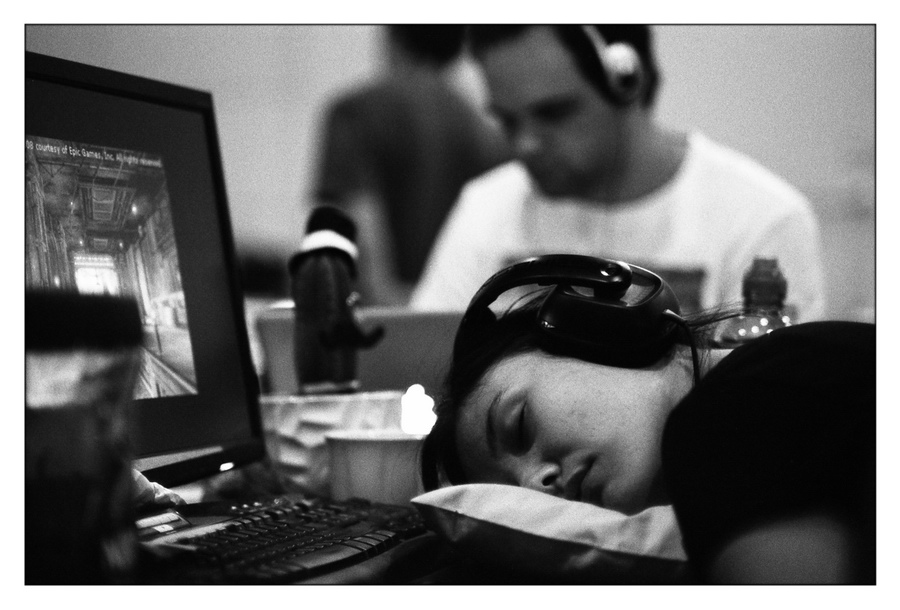Keith
The best camera is one that still works!
This coming weeked I'm photographing a 48 hour computer game writing marathon over three days ... this is now the third year I've photographed this event. Year one I did it with Tri-X pushed one stop to 800 ... the hall/gallery it's held in is kind of dark and even at 800 ISO and f1.4 I'm down to 1/15 occasionally. I did it last year digitally in colour and the results kind of sucked so this year it's back to black and white film. I expect to shoot between 350 and 450 exposures.
I have lots of Tri-X in the freezer and I still have a twenty pack of Neopan that's a few years old but it should be fine as it went straight in the freezer when I got it ... I'll be developing the film in Rodinal. Occasionally I shoot outside ... usually at the very start when the teams are out of the gallery planning their strategies and probably only one roll, maybe two. The rest will be in the gallery under dim artificial light. It's mainly a room full of computer engineering geeks slaving away at their computers and creating an environment that looks a little like the inside of a garbage skip by the third day. 😛
I'll use the Widelux for some selected shots and will probably have to push the film to 1600 because of its relatively slow lens.
Given this situation would you go with the Neopan or the Tri-X ... and please offer some reasons if you can? I've used both films fairly extensively and don't have any problems with either but was wondering if there are any reasons to favour one over the other.
I have lots of Tri-X in the freezer and I still have a twenty pack of Neopan that's a few years old but it should be fine as it went straight in the freezer when I got it ... I'll be developing the film in Rodinal. Occasionally I shoot outside ... usually at the very start when the teams are out of the gallery planning their strategies and probably only one roll, maybe two. The rest will be in the gallery under dim artificial light. It's mainly a room full of computer engineering geeks slaving away at their computers and creating an environment that looks a little like the inside of a garbage skip by the third day. 😛
I'll use the Widelux for some selected shots and will probably have to push the film to 1600 because of its relatively slow lens.
Given this situation would you go with the Neopan or the Tri-X ... and please offer some reasons if you can? I've used both films fairly extensively and don't have any problems with either but was wondering if there are any reasons to favour one over the other.


